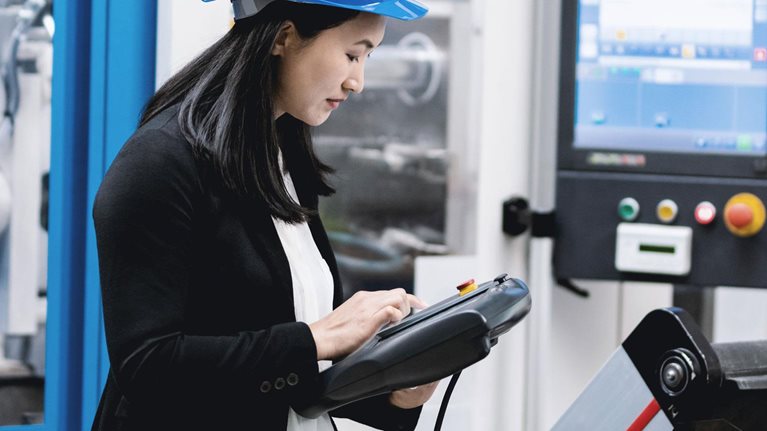Pharma companies are facing increased pricing pressures, intensifying competition, and shrinking price margins for small molecules and biologics that have lost their exclusivity. Active pharmaceutical ingredients (APIs)—the therapeutic core of every finished drug product—account for 30 percent of total drug product costs for small molecules and up to 55 percent for biosimilars and generics.1 As a result, API manufacturers have a continuing need to improve performance while reducing costs.
Fermentation-derived2 APIs, made using microbial or cell-line hosts (also called expression systems), are a $55 billion market (Exhibit 1). Fermentation’s importance is growing due to the rise of biologic drugs made almost exclusively this way.

The hosts are complex miniature biofactories with thousands of controllable parameters. Tuning these parameters through “strain improvement” (including mammalian cell-line development) has long been part of research-and-development efforts to accelerate time to market, reduce manufacturing costs, and carve out protection in increasingly crowded intellectual-property landscapes.
In a recent survey of industry professionals, however, we found that many companies are not taking full advantage of strain improvement, missing out on value creation as high as hundreds of millions of dollars for a single product. Given advances in technology, there has never been a better time to pursue this opportunity.
How technology is boosting the potential benefits of strain improvement
Strain improvement has already delivered tremendous value to the industry, and the future looks even brighter. Historically, two approaches have been used to improve hosts in existing fermentation processes: random screening of host mutations to identify improved mutants and hypothesis-driven pathway engineering with recombinant DNA technology (see sidebar “Historical strain-improvement techniques”). Whereas the first approach is limited by lack of precision and the logic of induced genetic changes, the pathway engineering approach is limited by our finite understanding of cellular biochemistry.
However, a wave of technology developments, including cheap and reliable DNA sequencing, powerful and precise gene editing, automation and robotics innovation, and digital and data advances, is enabling entirely new approaches to exploring and optimizing genomes for API production (see sidebar “Technical innovations in strain improvement”). Whereas before, strain-optimization campaigns could create only a few hundred strain variants at best, scientists can now generate and screen thousands in a single campaign, each with precise, systematic variations.
Simultaneously, big data analytics and machine learning can be applied to the significant datasets created by this high-throughput approach, allowing an empirical search approach to augment hypothesis-driven modifications to the genome. This approach can identify entirely unintuitive combinations of genetic perturbations, including “off-pathway” edits in unexplored genomic spaces with no known relation to the pathway of interest.
Practically speaking, what does this mean for pharma companies? In effect, the ceiling for fermentation performance has been raised. New strain-improvement approaches can unlock raw performance improvements, in one instance increasing yield more in one year than traditional approaches had unlocked in more than a decade. They also allow optimization over several parameters at once—for example, increasing titer while reducing impurities. Pharma manufacturers can now leverage strain improvement to its full potential.
Leveraging the full potential of strain improvement
Although strain improvement can create great value, many companies are not taking full advantage. A significant barrier is the increased regulatory burden of postapproval changes. In our survey, only 13 percent of respondents described postapproval strain improvement as occurring often or sometimes, with more than 90 percent listing regulatory hurdles as a key reason for not doing it (Exhibit 2). Despite this, significant process changes requiring a Prior Approval Supplement, a category that includes strain improvements, are relatively common in fermentation-derived and biological drug classes (Exhibit 3).


What is a drug manufacturer to do? While postapproval strain improvement, particularly in the case of biologics, can require repeat trials costing tens of millions of dollars or more, the benefits can be even greater in many cases. Some companies have saved hundreds of millions of dollars in manufacturing costs and eliminated the need for billion-dollar capacity expansions. It is clear from our research that many pharma players are making bold postapproval process improvements, while others may not be capturing the full return on investment of product launches. And new strain-improvement techniques are changing the calculus by delivering greater advancements in performance at a faster rate, thereby enhancing the strain-improvement business case for postapproval changes and at-risk investments during development.
Our survey identified the most pursued goals of strain improvement (Exhibit 4). They fall into three categories:
- Accelerate time to market.
- Improve cost and intellectual property (IP) position.
- Maximize use of fixed assets.

To maximize the value of strain improvement, our research identified three optimal points in the product life cycle:
- During development: Early in development, strain improvement can accelerate and increase the likelihood of reaching the market. Survey respondents frequently cited improved product safety and efficacy profiles, including reduced immunogenicity and improved pharmacokinetics. As drugs advance through the development life cycle, strain optimization can increase the bottom line at launch and beyond by improving process productivity and locking in lower production costs. Early in development, strain improvement is essentially at risk since the product may never be approved. But once in Phase III, changes to the production process may require additional regulatory steps, weakening the business case for strain improvement.
-
Postlaunch: While a label expansion for new indications is good news for a pharma company, it may stress manufacturing capacity. For a company faced with the choice to invest millions or extend its contract development and manufacturing organization (CDMO) contracts, strain improvement can be a cost-effective alternative. The potential upside of many fermentation processes is substantial: we have seen productivity improvements of more than 50 percent for on-market drugs. Not only does this development reduce the need for investment, but it also improves unit economics as fixed facility costs are spread across higher production volumes, lifting margins. Given the upside to strain improvement can be a product cost reduction of tens to hundreds of millions of dollars a year, the investment is often worthwhile.
This ability of strain improvement to increase productivity and lower costs was widely cited in our survey: nearly 90 percent of respondents pointed to increased yield, and nearly half cited reduced impurities, which can lower downstream purification costs. After launch, the trade-offs between process improvements and potential additional approvals are relatively manageable for small molecules, requiring only a demonstration of chemical equivalence. Biologics, however, may require more substantial approvals, sometimes including the repetition of clinical trials.
- As loss of exclusivity (LOE) approaches: More than $60 billion worth of biologics are expected to lose their patent protection between 2020 and 2024. Branded biologics players can use strain improvement to better their cost position and strengthen their IP (cited by more than a third of survey respondents) to fend off generic and biosimilar competition. Companies that want to follow this route should begin working on strain improvement two to five years before LOE. For their part, generic and biosimilar players can use strain improvement to lower their manufacturing costs, too.
Beyond the question of when, pharma players must also determine how to leverage advances in strain improvement—by developing capabilities in-house or tapping external partners. In contrast to earlier approaches, strain improvement today requires the integration of several capabilities to truly reach its potential, including high-throughput robotics and automation, precision DNA editing, end-to-end data capture and analytics, and technology transfer from lab to production. Increasingly, therefore, strain improvement may become the domain of specialists such as CDMOs, contract research organizations, and biotech platform players.
This may necessitate a change in innovation models for many pharma incumbents. While respondents leverage external expertise for most strain improvements, 40 percent are still conducted entirely in-house (Exhibit 5). Companies that do not aggressively access the best capabilities may be left behind while others take full advantage of strain improvement.



